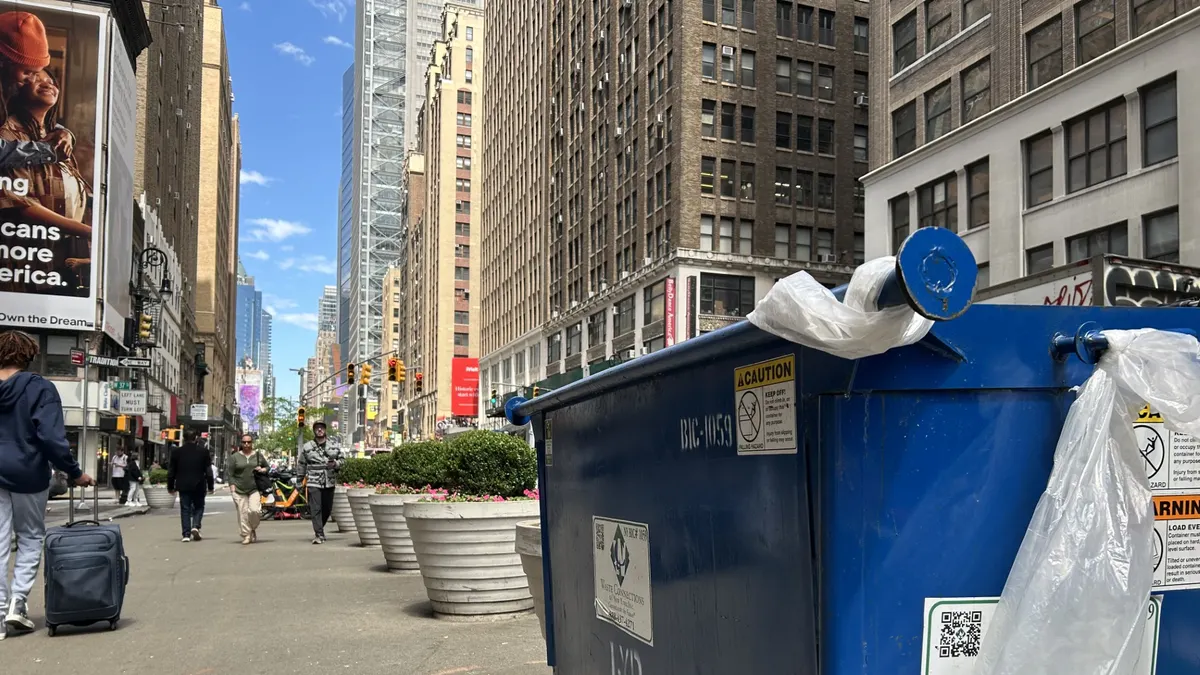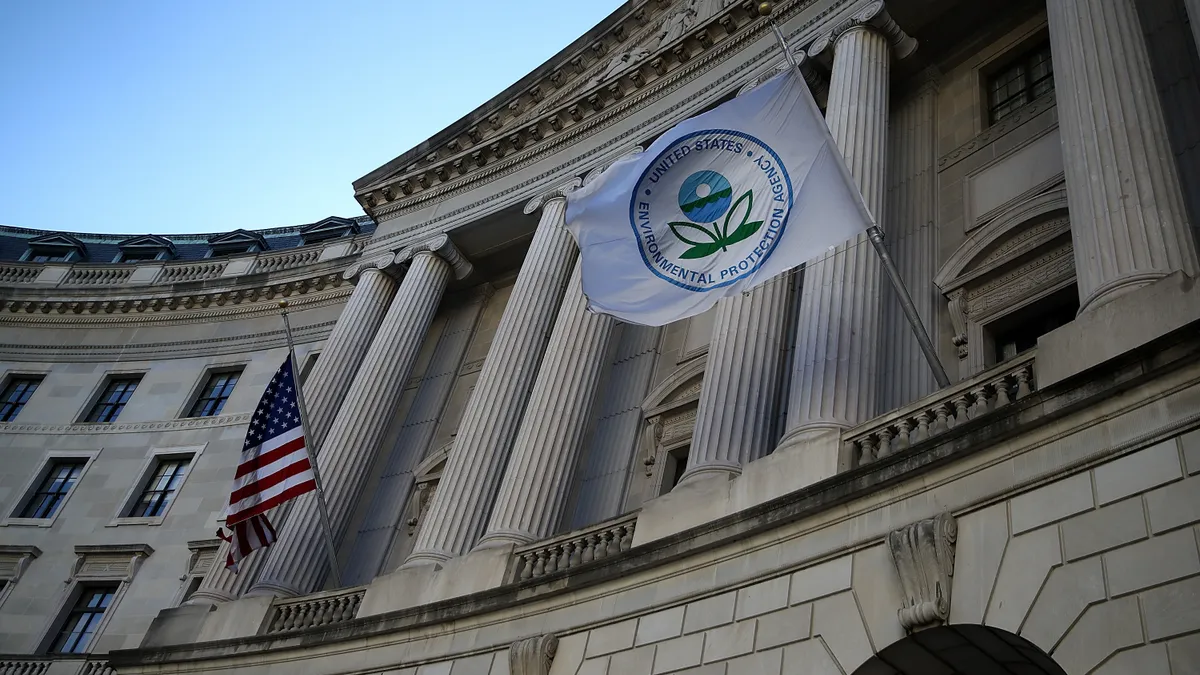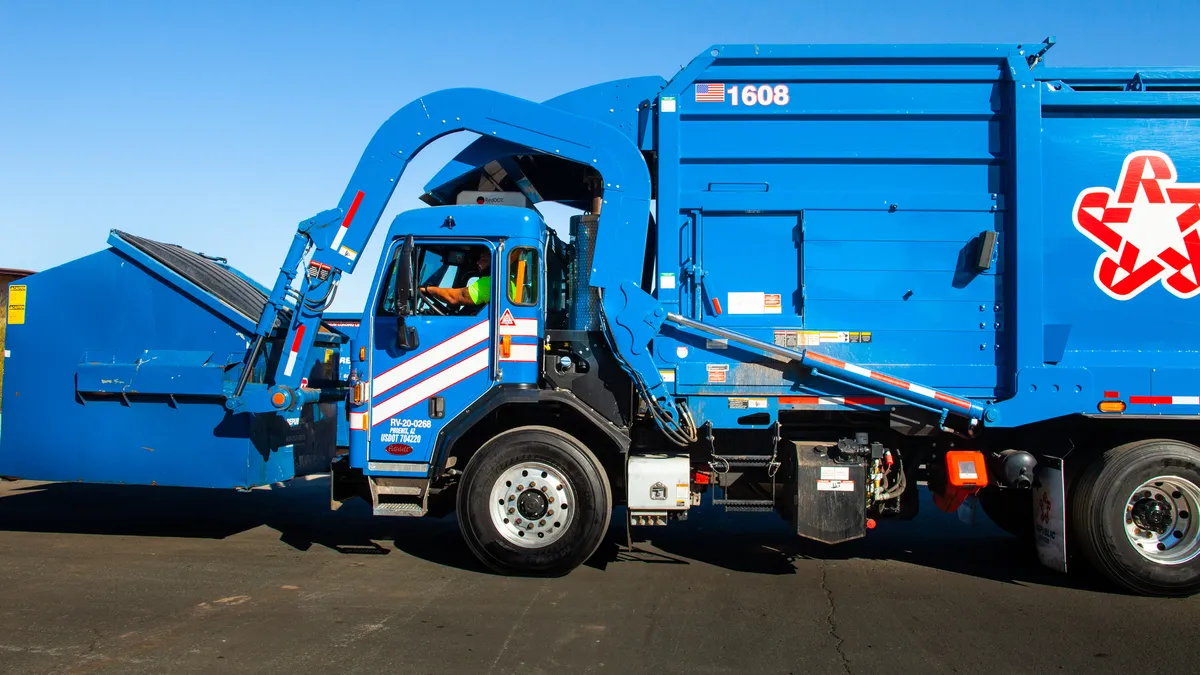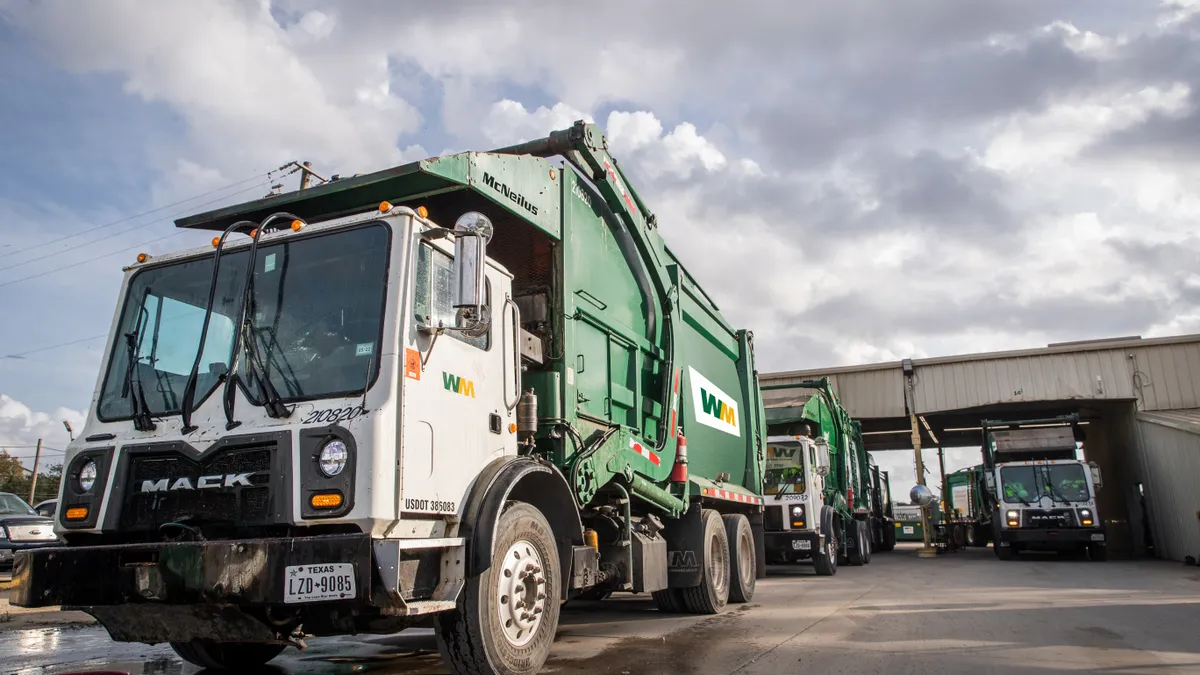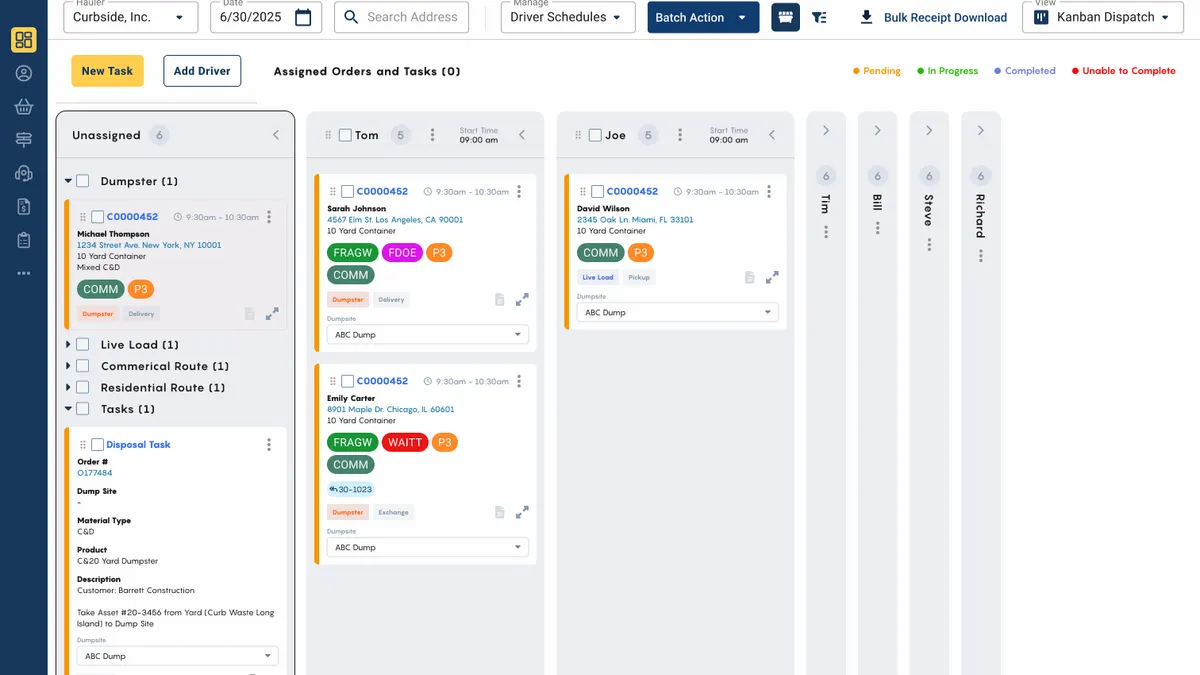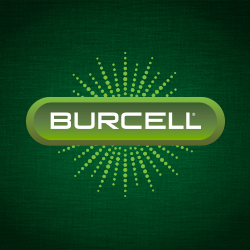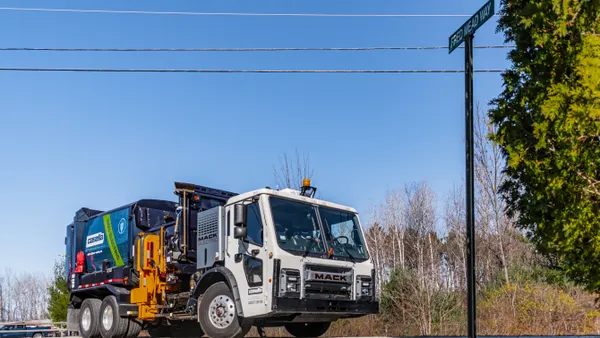Republic Services had yet another strong showing at the National Waste & Recycling Association's Driver of the Year Awards, with two employees — Toribio Gonzalez and Chuck Thorpe — receiving the honor.
Waste Dive spoke to Senior Vice President of Safety Jim Olson at WasteExpo in Las Vegas to learn more about these two veteran drivers, company safety culture and the role of technology in the industry.
The winners
To be considered for the award, drivers need both a long safety record and a record of outside engagement. "They help in churches and schools and little league teams and they're just really active members in their community, and our two guys that we had win are no exception to that," said Olson of what makes a prime candidate.
Gonzalez, of the Huntington Beach, Calif. division, won in the large industrial truck category. According to Republic, he has maintained "a perfect safety record with zero incidents or injuries" for the past 30 years. Olson said Gonzalez's "down to earth, humble" work ethic has helped inspire family members to push harder in their own careers and served as a model for fellow employees.
Thorpe, from the Telford, Pa. division, won in the large residential truck category. His record spans more than 20 years and also includes multiple stints on unfamiliar routes through the company's SOS emergency response program. After Hurricane Harvey, Thorpe came down to Houston and covered collections for local drivers that were busy fixing their homes and recovering from the storm. According to Olson, Thorpe "loves doing that" and "loves helping people out."
Safety culture
When asked what makes Republic's safety culture unique, Olson said the fact that CEO Don Slager used to be a driver himself is a big part of it.
"He knows what he did wrong back in the day, and he understands the reason that we do what we do now," said Olson. "He's a huge advocate for lighting, mirrors, cameras. Anything to make it easier to do your job and safer to do your job."
One example was how a driver in Massachusetts, who made a lot of alley pick-ups, wanted a better way to see when he was backing out. Olson said this input led the company to invest in alley cameras with a perpendicular view, which have now become common practice for many industry companies.
"It's the grassroots and the top level leadership that really makes our culture a little bit different, where we're not just pushing. We really do want to listen and hear more about how can we be successful, how can we make you safer in your job, and what can we do to help you out," he said.
Technology
Looking at broader technology trends, Olson said, "quite frankly we're a little bit disappointed in some of the stuff we've heard lately." He said collision avoidance systems which have been available for trucks in other industries have only just come into the waste industry, even though many of the same manufacturers are involved.
Through both Republic and the NWRA's safety council, Olson said he's been working to bring lane departure warnings, right-hand turn notifications for obstacles and other features into the industry as soon as possible.
Figuring out how to balance all of these features with other devices for routing and service confirmation has made some feel that cabs are getting too crowded.
"Distractions in the cab have replaced fatigue as the number one cause of serious accidents in the trucking industry," said Advanced Disposal Services CEO Richard Burke at last week's investor summit.
Olson has a slightly different view.
"Honestly, if it's done right I'm not as concerned about that," he said. "So the real key to any technology in the cab is it can't be interactively used while the wheels are turning. If it's not then it won't be a distraction, it will just be an assist. [Some companies] don't think that way and they want people pushing buttons while they're driving. That's exactly what Burke's concerned about and you just can't let that happen."
Fatality and injury trends
Waste collection remains the fifth most dangerous occupation in the country, much to the industry's chagrin, and preliminary data from the Solid Waste Association of North America reveals 2017 didn't get any better. When asked what more could be done beyond technology investments and training, Olson said part of the problem was outside the industry's control.
Republic has already experienced five third-party fatalities in 2018 that involved a vehicle crossing the double yellow lines and hitting a truck head-on. Olson estimates that such incidents now account for nearly 70% of third-party fatalities, as compared to 25-30% in past years.
"We're getting better with our own drivers and their own driving behavior, but third parties are just … It's horrible. I mean it's really bad how many people text and drive. Our drivers in the whole industry are exposed to that constantly," said Olson. "So that to me is one of the big reasons they're going in the wrong direction."
Disposal sites and MRFs
While collection and on-the-road operations receive a lot of attention because they account for the highest share of serious worker or third-party incidents, more controlled sites have room for improvement too. SWANA's data showed landfills, transfer stations and MRFs all had fatalities in 2017.
Olson said trade associations and the companies that comprise their membership are actively focused on implementing best practices at all of these sites to avoid traffic-related incidents. Yet this gets harder when Republic sites take material from non-members, or vice versa, and everyone isn't on the same page about safety standards.
"Traffic control is a big problem," said Olson, emphasizing the need for adequate spacing between vehicles, high visibility gear and limiting the number of people on foot in these areas. Otherwise, he said, "you're rolling the dice every day" and "somebody could get run over."
The same goes for MRFs, where tipping floor activity can present a hazard. Lock-out/tag-out and confined space entry procedures are also both still viewed as top issues at Republic facilities.
Looking Ahead
With all of this in mind, Olson said Republic's basic approach to training has evolved. This means having more "hands-on skill training," in addition to classroom sessions, so drivers stay engaged and don't get bored watching "the same video again."
"More hands on, that's a real positive thing for us," said Olson. "So we have high expectations of our drivers to not be distracted and be highly skilled, but then technology to help them prevent collisions."






